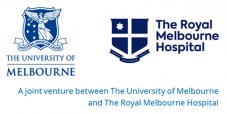Mongolia
WHO Collaborating Centre for Viral Hepatitis working with Mongolia on their world-leading Programme
In Mongolia, the leading cause of death is liver cancer. The country has one of the highest rates in the world (accounting for an estimated one in 10 deaths), and 98% of this burden is attributed to viral hepatitis infection. Nearly 80% of the population is estimated to have been infected with hepatitis B virus (HBV) at some stage in their lives, and at any one time, between 10-22% of the population is chronically infected. Mongolia also has the highest hepatitis C virus (HCV) prevalence in the Western Pacific region, and estimates of hepatitis D virus (HDV) co-infection among people with chronic HBV infection range from 40-60% [1].
In April 2017 Mongolia established The Healthy Liver Programme 2017-2020 to eliminate HCV infection and reduce mortality due to cirrhosis and liver cancer through early detection and treatment of HBV and HCV infection. The aim of this Programme is to screen the entire population for HBV and HCV and deliver treatment where required.
To achieve this goal, the Mongolia Ministry of Health requested support from the World Health Organisation (WHO). This support included co-facilitating and presenting the WHO’s first National Workshop for Strengthening and Linking Viral Hepatitis Laboratory, Surveillance and Patient Monitoring Systems in April 2017 (summarised here), a mission to develop the national strategic information framework in August, and a laboratory assessment mission in September 2017.
To develop a national strategic information framework for viral hepatitis (adapted from WHO guidelines), the Mongolia Ministry of Health was assisted by a mission team consisting of the WHO Regional Office for the Western Pacific, Office of the WHO Representative in Mongolia, and the WHO Collaborating Centre for Viral Hepatitis at the Doherty Institute. This mission produced a Framework proposal and report that provided recommendations on the approaches that Mongolia could take to monitor the national viral hepatitis programme and operational plans for collecting and analysing strategic information to guide viral hepatitis elimination efforts. The approaches built on existing preventive and care services and health information systems for viral hepatitis, and recommended action steps that detailed the objectives, adjustments, and information linkages required to generate and use information for action.
The Mongolia Ministry of Health also recognised that quality laboratory support is essential to achieve their ambitious aim of eliminating HCV and stopping HBV transmission. They requested the WHO to provide technical support to review and assess the quality and technical capacity of hepatitis laboratories in Mongolia. The WHO Regional Office for the Western Pacific (WPR) conducted the assessment jointly with technical consultants from the Victorian Infectious Diseases Reference Laboratory (VIDRL), the WHO Collaborating Centre for Viral Hepatitis at the Doherty Institute, and the National Reference Laboratory (NRL). Two teams carried out site visits for laboratory assessments at the 21 public and private laboratories designated to perform HCV viral load testing, using a custom checklist developed for this mission. At the final presentation to representatives from the laboratories and the Ministry of Health, a number of action items were put forward, identifying potential areas of improvement that will allow the Healthy Liver Programme to successfully meet its goals.
While accepting there is still much to do, the Mongolian people have this year taken large steps towards ultimately eliminating HBV and HCV, and are leading the world in implementing viral hepatitis screening of the entire population.
Author: Margaret Littlejohn

